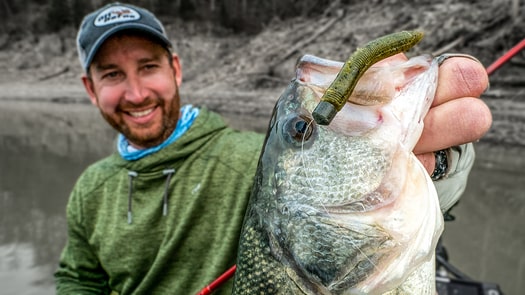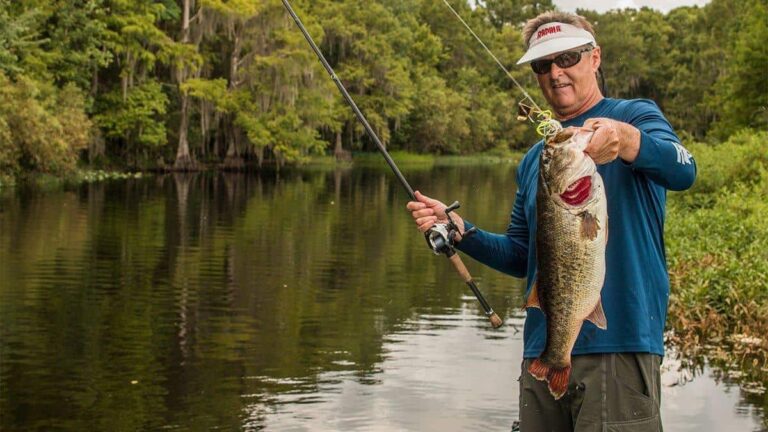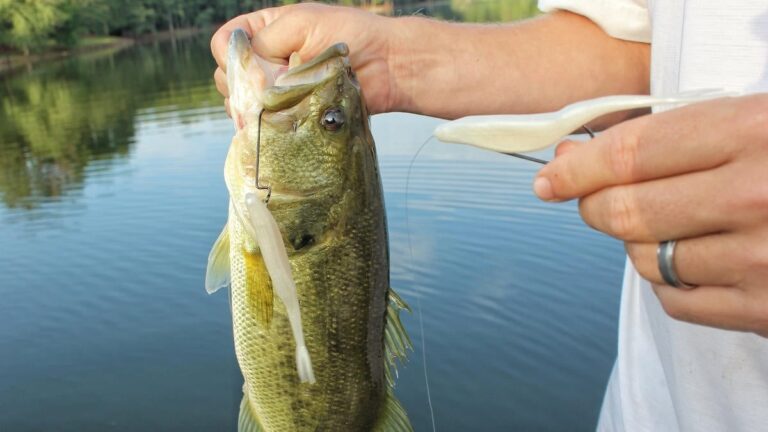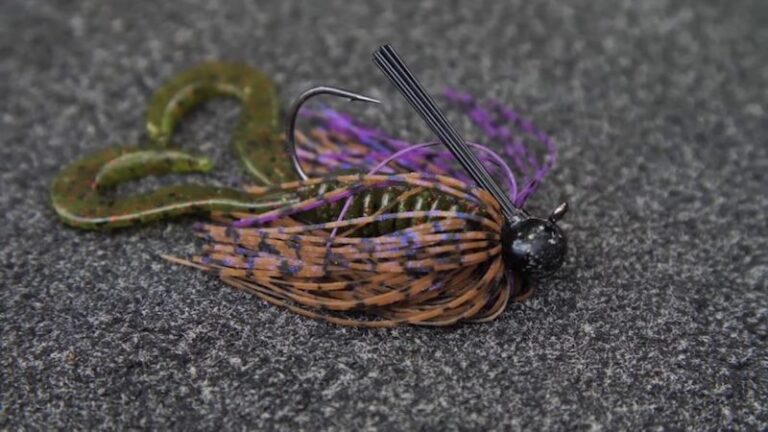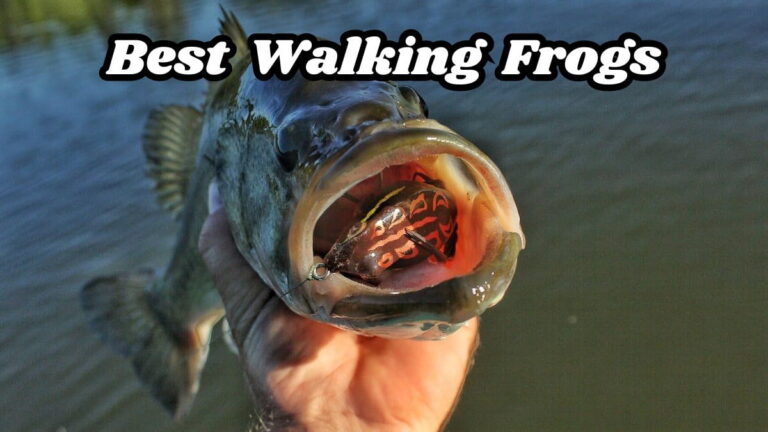Crankbait for Bass Fishing: Complete Guide to Crankbaits
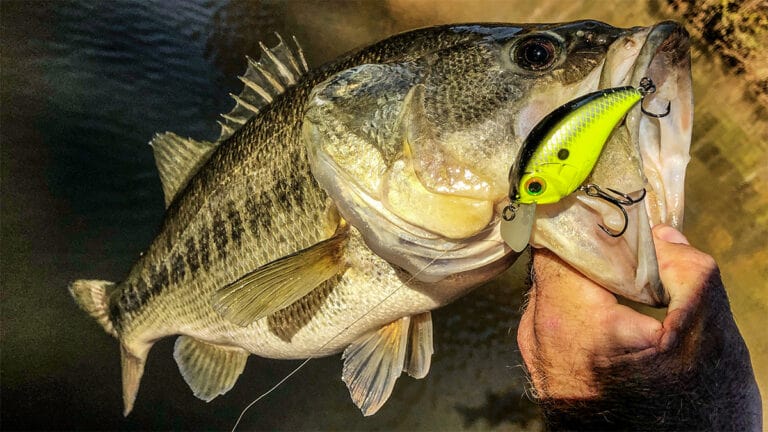
If you’re a fan of bass fishing, you know that selecting the right lure can make all the difference between reeling in a trophy catch and going home empty-handed.
That’s why today, we’re diving into the world of crankbaits—a must-have weapon in any angler’s arsenal when it comes to landing those elusive bass.
What is a Crankbait?
Curious about crankbaits? These fishing lures are designed to mimic baitfish, featuring a hard plastic body with a lip or bill.
They come in floating, suspending, and diving types, allowing anglers to target fish at different depths.
With their enticing action and vibrant colors, crankbaits cover a large area, attract bass, and are a favorite among anglers.
In the next section, we’ll explore why crankbaits are so effective for bass fishing.
Types of Crankbaits
When it comes to crankbaits, variety is the name of the game. These versatile lures come in different types, each with its own unique characteristics and applications.
Understanding the different types of crankbaits is key to selecting the right one for your fishing needs.
Square Bill Crankbait
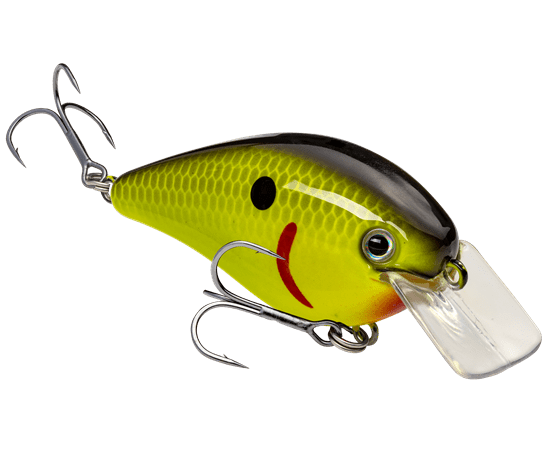
The square bill crankbait has become a favorite among bass anglers for its unique square-shaped lip.
This design allows it to quickly dive to shallow depths and deflect off cover, triggering reaction strikes from bass hiding in those areas.
Its versatility and lively action make it a go-to choice for fishing in shallow water and around structure.
With a variety of colors and sizes available, the square bill crankbait is a reliable tool for enticing bass and maximizing your fishing success.
Deep Diving Crankbait

The deep diving crankbait is a must-have for targeting bass in deeper waters.
With its longer lip, it dives to significant depths, allowing you to explore offshore structures and locate bass holding in deeper water.
Opt for bright and contrasting colors to enhance visibility, and use a slow and steady retrieve to mimic injured baitfish.
Add a deep diving crankbait to your tackle box for an effective tool in your quest for bass in the depths.
Lipless Crankbait

The lipless crankbait is a versatile and effective lure for bass fishing. Its streamlined design lacks a diving lip, allowing it to sink quickly and maintain a horizontal position.
With its intense vibration and wobbling action, it mimics distressed baitfish, attracting bass in various water depths.
Use a variety of retrieval speeds and colors to match the conditions and trigger strikes.
Whether you’re targeting schooling fish or covering open water, the lipless crankbait is a reliable choice to entice bass into action.
Equipment for Crankbait Fishing
To make the most of your crankbait fishing endeavors, having the proper equipment is essential. Here’s what you need to ensure you’re well-equipped for a successful crankbait fishing experience:
- Crankbait Rod: Opt for a medium to medium-heavy power casting rod. Look for a rod with a moderate action that allows for a bit of flex to absorb the crankbait’s action and the strikes from bass.
- Reel: Choose a baitcasting reel with a smooth drag system and a gear ratio suitable for crankbait fishing. A gear ratio between 5:1 and 7:1 is generally ideal for most crankbait applications.
- Fishing Line: Select a monofilament or fluorocarbon fishing line in the range of 10 to 15-pound test. These lines provide the right balance of strength and sensitivity for crankbait fishing. Fluorocarbon has the added benefit of low visibility underwater.
- Crankbait Selection: Build a collection of crankbaits that cover various diving depths and mimic the local baitfish. Include different sizes, colors, and action styles to match the conditions and preferences of the bass.
- Terminal Tackle: Ensure you have quality hooks, split rings, and swivels. Upgrading to sturdy and sharp treble hooks can significantly improve hook-up rates and reduce the chance of losing fish.
By having the right fishing rod, reel, line, crankbaits, terminal tackle, and accessories, you’ll be fully equipped for crankbait fishing success. So, gear up with the proper equipment, hit the water, and get ready for thrilling encounters with those bass!
How Crankbaits Imitate Baitfish
Crankbaits excel at imitating baitfish in the following ways:
- Body Shape: The streamlined body closely resembles the profile of swimming fish.
- Color Patterns: Realistic colors and markings replicate the appearance of baitfish.
- Internal Weighting: Proper weight distribution mimics the natural movement of prey.
- Diving Lip Action: The lip creates wobbling or darting motions like fleeing baitfish.
- Rattle Chambers: Built-in chambers produce noise and vibrations, resembling feeding fish.
Together, these features deceive bass by imitating the look, movement, and sound of baitfish.
Crankbaits exploit the bass’s predatory instincts, making them highly effective lures for enticing strikes.
Bass Feeding Behavior

Let’s talk about bass behavior and feeding habits, my fellow anglers. Bass are opportunistic predators that lurk near structures, waiting to ambush their prey.
They have a diverse diet, with a particular affinity for baitfish. That’s where crankbaits shine!
These lures mimic both the appearance and behavior of baitfish, fooling bass into thinking it’s an easy meal.
By understanding bass behavior and using crankbaits strategically, you’ll increase your chances of reeling in some impressive catches.
Crankbait Versatility
Crankbaits are incredibly versatile lures that excel in different fishing conditions:
- Shallow Water: Perfect for exploring cover like weed beds or fallen trees.
- Deep Water: Deep diving crankbaits reach significant depths for offshore structures.
- Clear Water: Natural color patterns and subtle presentations work best.
- Murky Water: Bright and vibrant colors help attract attention in reduced visibility.
- Biting Patterns: Adapt to fast retrieves for active bass and slower retrieves for colder months.
With their adaptability, crankbaits ensure you’re well-equipped for various fishing scenarios, increasing your chances of success.
Efficiency of a Crankbait
Crankbaits excel at covering vast areas and searching for active fish:
- Wide Coverage: Cast over long distances to explore expansive water.
- Efficient Exploration: Dive to different depths, thoroughly examining the water column.
- Triggering Strikes: Mimic prey fish with action and vibration, provoking bass to strike.
- Navigating Structures: Deflect off obstacles without getting tangled, targeting fish in hiding spots.
With their ability to search effectively and entice strikes, crankbaits are a go-to choice for anglers looking to locate and catch active fish.
Choosing the Right Crankbait

Selecting the right crankbait is essential for successful bass fishing. Here’s what you need to consider when choosing your perfect crankbait:
- Depth: Determine the diving depth you need based on the water conditions and where the bass are located. Match the crankbait’s diving capability to the target depth to effectively reach and entice the fish.
- Color: Consider the water clarity and the prevalent forage in the area. Choose crankbait colors that closely resemble the local baitfish or opt for contrasting colors to attract attention in murky water.
- Size and Shape: Adjust the crankbait’s size and shape based on the season and the size of the bass’s natural prey. Match the hatch by selecting a crankbait that closely resembles the baitfish or experiment with different sizes to trigger strikes.
- Action: Pay attention to the crankbait’s action. Different crankbaits offer different swimming motions, from a tight wobble to a wide side-to-side movement. Choose an action that best mimics the behavior of the baitfish in the area.
By considering the diving depth, color, size, shape, and action of your crankbait, you can optimize your chances of enticing bass to strike.
Take these factors into account, and you’ll be well-equipped to select the perfect crankbait for your bass fishing adventures.
How to Use a Crankbait for Bass
- Casting and Retrieving: Cast your crankbait near potential bass hiding spots like structure, cover, or drop-offs. Once it hits the water, start reeling it in steadily. The key is to vary your retrieval speed, mimicking the erratic movements of baitfish. Experiment with fast, medium, and slow retrieves to find what works best.
- Bump and Pause: As you retrieve your crankbait, try adding occasional pauses and bumps. When your lure hits an object like rocks or vegetation, let it pause for a moment, then resume your retrieve. This change in movement can trigger reaction strikes from nearby bass.
- Crankbait Depth Control: Adjust your crankbait’s diving depth by counting down before starting your retrieval. Pay attention to the lure’s depth range and use this technique to target different depths where bass might be lurking. Remember, hitting the right depth can make a big difference in enticing strikes.
- Targeting Cover and Structure: Crankbaits excel at enticing bass hiding around cover and structure. Cast your lure close to submerged trees, docks, weed beds, or any other hiding spots. Crankbaits’ ability to deflect off objects and create vibrations can trigger strikes from bass seeking shelter.
- Experiment with Colors: Don’t be afraid to experiment with different crankbait colors. Start with natural hues that match the baitfish in the area. If you’re not getting bites, switch to brighter or contrasting colors to grab the bass’s attention, especially in murky water.
Tips for Crankbait Bass Fishing
Ready to level up your crankbait fishing skills? Here are some advanced tips and tricks to help you succeed:
- Fine-tuning: Experiment with hooks, weight, and tuning clips for optimal performance.
- Modifications: Customize your crankbait with feathered hooks, stinger hooks, or unique paint jobs.
- Vary Retrieval: Mix up speeds and cadences to find what triggers strikes.
- Adjust to Weather: Adapt your presentation based on windy or calm conditions.
With practice and persistence, these advanced techniques will have you reeling in impressive bass in no time.
FAQ
Q1: What is the purpose of a crankbait?
A1: Crankbaits are fishing lures designed to mimic baitfish, attracting bass with their enticing action and vibrant colors. They come in different types for various depths and conditions.
Q2: How do I choose the right crankbait?
A2: Consider factors like diving depth, color, size, shape, and action. Match these to water conditions and bass behavior to optimize your chances of enticing strikes.
Q3: What equipment is essential for crankbait fishing?
A3: Essential equipment includes a medium to medium-heavy casting rod, a baitcasting reel, 10 to 15-pound test fishing line, a variety of crankbaits, and quality terminal tackle.
Q4: How do crankbaits imitate baitfish?
A4: Crankbaits imitate baitfish through features like body shape, realistic color patterns, internal weighting, diving lip action, and rattle chambers, deceiving bass with the look, movement, and sound of prey.
Q5: Where should I use crankbaits for bass fishing?
A5: Crankbaits are versatile and can be used in shallow water, deep water, clear water, murky water, and adapted to different biting patterns. They excel at covering vast areas and searching for active fish.
Reeling this In
From understanding what a crankbait is to exploring its versatility, selecting the right lure, and mastering advanced techniques, you’re well-prepared to tackle the water with confidence.
So, grab your gear, tie on your favorite crankbait, and head out to your favorite fishing spot.
Whether it’s the thrill of casting and retrieving, the joy of bumping and pausing, or the satisfaction of fine-tuning your technique, crankbait fishing has something for every angler.
Now, go forth, explore, and may you reel in those trophy bass with your newfound crankbait knowledge. Happy fishing!


